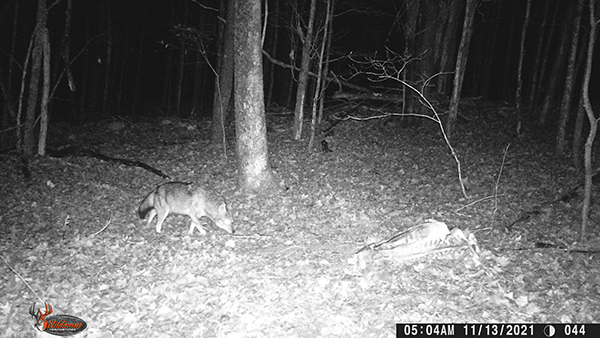The Putnam County Fish and Game Association installed their deer exclosure in 2014. Three years later, the exclosure stands strong because of good maintenance practices.
The Putnam County Fish and Game Association (PCFGA) owns 60 acres of woods in central Putnam County. In 2012, Hurricane Sandy blew over or snapped many of their trees. In response, they installed a deer exclosure in 2014 to protect the new seedlings from deer browse. You can read about their installation experience here.
The club installed their exclosure in a day, but deer fences aren’t “set it and forget it” stewardship. They take years of sustained maintenance to keep them upright and working. The maintenance isn’t hard, but it does require a willingness to check the fence now and then.
For instance, PCFGA’s exclosure has something called a guidewire. They chose a poly-wrapped steel wire, and it adds strength to plastic fences. Over time, the guidewire can sag and stretch, which can lower the fence’s height and allow deer to enter the protected area. But as PCFGA Forestry Chair Tom Hall explains, “We rarely have to tighten the fence. Everything is attached to trees and posts, so as the trees grow it helps tighten the fence.” With a couple quick turns of the “tightener”—a metal tool that makes it easier to shorten the guidewire—the wire is straight and taut.

PCFGA Forestry Chair Tom Hall fixes sagging guidewire on the club’s deer exclosure with a couple of turns of the “tightener.” It’s a simple and quick action that keeps the fence strong.
In addition to tightening the wire, PCFGA’s members also remove vegetation, like vines, that grow up the fence. Oriental bittersweet and multi-flora rose are particular problems. The invasives climb the fence and weigh it down, causing it to sag. PCFGA deals with that problem by periodically walking the fence and cutting off at ground level any plants climbing the fence.

Oriental bittersweet vine and multi-flora rose grow up PCFGA’s fence, causing it to sag. Cutting these invasive plants off at ground level will remove the growth and allow the fence to be tightened back to its full height.
Tom was concerned that deer might crawl under the fence, but the club has yet to find evidence of that. If it does happen, the fix will be to place logs or piles of brush along the outside of the fence.
It’s also important to check the exclosure after storms. “I once had to go in the fence and chase out 3 deer,” Tom says. “A part of the fence had gone down.” A falling branch had snapped some of the zip ties that help keep the fence upright.
Despite some heavy storms, the fence itself has never broken. “Zip ties may break, “says Tom, “but not the fence.” PCFGA’s fence was made from a plastic called Tenax C-Flex. Depending on the specific fence it’s used in, the plastic has a breaking strength of up to 1400 pounds.
Paired with the monofilament guidewire, the C-Flex has impressive durability. After 3 years, PCFGA’s deer exclosure remains in good shape thanks to the club’s good maintenance practices.
A little work goes a long way. “Maintenance has been very minimal, “says Tom.
It will be several more years before PCFGA can remove their exclosure. The fence needs to stay in place long enough to make sure enough seedlings inside it grow beyond the reach of deer. But with the club’s maintenance work, they’re well positioned to achieve their goal of a healthy new forest.





